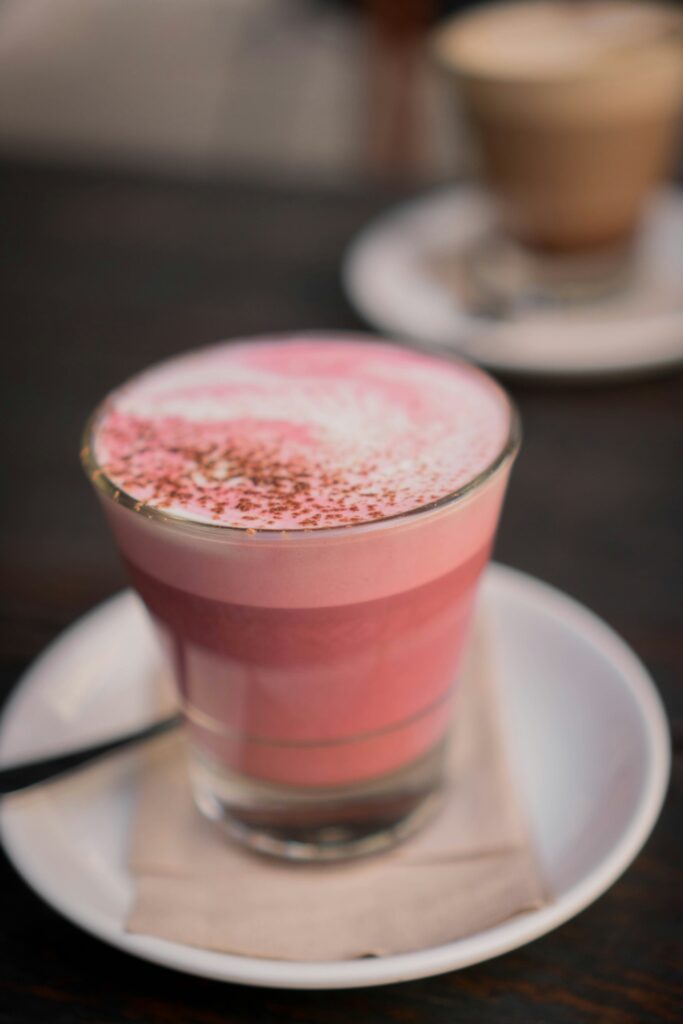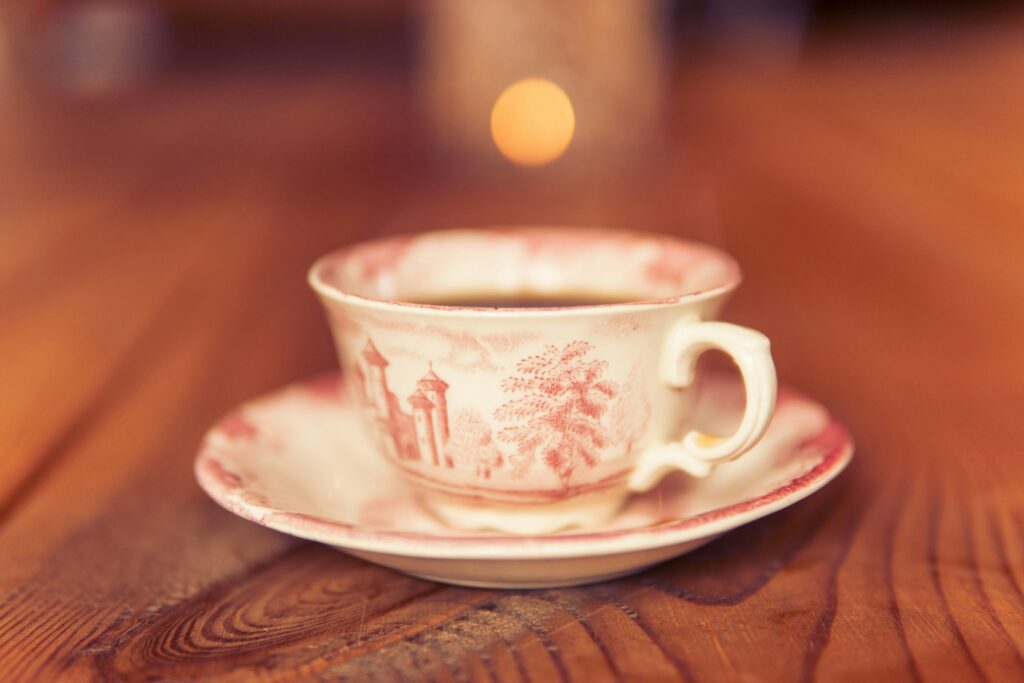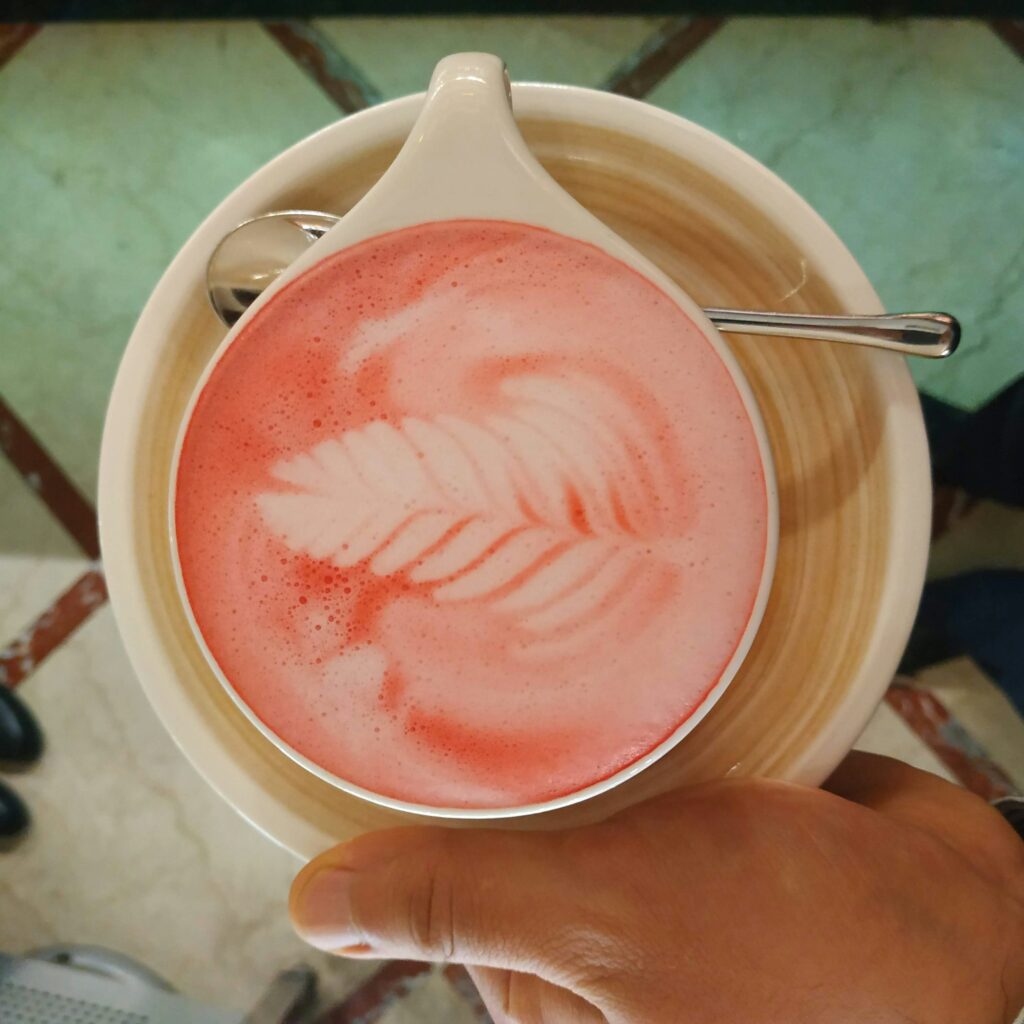Kashmiri Chai, also known as Pink Tea or Noon Chai, is one of South Asia’s most visually stunning and culturally cherished drinks. With its rich pink color, creamy texture, and aromatic garnishes of crushed almonds and pistachios, it’s far more than just a beverage—it’s a tradition. Popular in Kashmir, Pakistan, and across the diaspora, Kashmiri Chai holds a special place at weddings, winter gatherings, and cultural festivals.
Unlike regular black tea or doodh patti, Kashmiri Chai is made using special green tea leaves, baking soda, and a slow-brewing method that gives it its signature rosy hue. Let’s explore its history, recipe, and deep cultural significance.
The History of Kashmiri Chai
Origins in Kashmir Valley
The roots of Kashmiri Chai trace back to the Kashmir Valley, where cold winters demanded a warm, nourishing drink. Traditionally called Noon Chai (“Noon” meaning salt in Kashmiri), the earliest version was salty, rich in butter, and consumed with traditional breads.
Influence of Central Asian Tea Traditions
The concept of salted, buttery teas is not unique to Kashmir. Similar versions exist in Tibet (Butter Tea) and Central Asia, suggesting cultural exchanges along the Silk Road influenced Kashmiri tea culture.
Spread to Pakistan and South Asia
When Kashmiris migrated across regions, Noon Chai evolved. In Pakistan, especially Punjab, the sweetened pink version became popular—eventually becoming a wedding staple and winter specialty.
The Unique Characteristics of Kashmiri Chai
The Signature Pink Color
The iconic pink shade doesn’t come from artificial coloring—it’s a result of a chemical reaction between green tea leaves and baking soda. The process requires patience and proper technique.
Key Ingredients: Tea Leaves, Baking Soda, and Milk
- Green Tea Leaves (Gunpowder tea works best)
- Baking Soda for color activation
- Milk for creaminess
- Salt or Sugar depending on preference
- Garnishes: Almonds, pistachios, and sometimes cardamom
Flavor Profile: Creamy, Nutty, and Spiced
Unlike strong black teas, Kashmiri Chai is mild yet complex. It has a slightly nutty, savory undertone balanced with creaminess from milk and richness from dry fruits.

Cultural Significance of Kashmiri Chai
A Winter Staple
In the chilly months of Kashmir and Northern Pakistan, Kashmiri Chai is more than comfort—it’s survival. Its richness provides warmth and sustenance.
Role in Weddings and Celebrations
In Pakistani weddings, particularly Valima receptions, guests eagerly anticipate Kashmiri Chai. Its serving signals hospitality and festivity.
Symbol of Kashmiri Identity
For Kashmiris, Noon Chai is not just a drink but a marker of cultural pride and heritage, often enjoyed daily with breads like kulcha and tsot.
Step-by-Step Recipe: Authentic Kashmiri Chai
Ingredients You’ll Need
- 2 tablespoons Kashmiri green tea leaves (or gunpowder green tea)
- ½ teaspoon baking soda
- 2-3 cups cold water
- 2 cups milk
- 2-3 cardamom pods (optional)
- Sugar or salt to taste
- Crushed almonds & pistachios for garnish
Step 1: Brewing the Base (Qahwa)
- Add tea leaves and water to a deep pan.
- Bring to a boil, then reduce heat and let it simmer for 15–20 minutes.
Step 2: Achieving the Pink Hue
- Add a pinch of baking soda (no more than ¼ tsp).
- Stir continuously. The tea will foam and turn a reddish-brown color.
- Pour in cold water and keep boiling until a deep red base forms.
Step 3: Adding Milk and Simmering
- Slowly pour in milk. As it blends, the tea transforms into a rosy pink shade.
- Let it simmer for 5–7 minutes to thicken.
Step 4: Garnishing and Serving
- Strain the tea into cups.
- Top with crushed almonds, pistachios, or even a sprinkle of cardamom.
- Serve hot with snacks, breads, or sweets.
Common Mistakes to Avoid
Overboiling the Tea
Too much boiling can make it bitter. The trick is slow simmering.
Skipping Baking Soda
Without baking soda, you won’t get the iconic pink color.
Using the Wrong Tea Leaves
Only Kashmiri or gunpowder green tea works. Black tea won’t give the right effect.

Variations of Kashmiri Chai
Noon Chai (Salty Version)
The traditional Kashmiri version with salt and butter.
Modern Sweetened Pink Tea
The popular Pakistani version with sugar, garnished with nuts.
Restaurant-Style vs Homemade
Cafes often make it creamier and sweeter, while homemade versions may stick closer to tradition.
Health Benefits of Kashmiri Chai
Rich in Antioxidants
Green tea leaves provide powerful antioxidants.
Digestive Support
The alkaline effect from baking soda may soothe digestion.
A Warming Drink for Cold Weather
Its rich, creamy texture makes it a perfect winter immunity booster.
Kashmiri Chai in Popular Culture
Poetry and Pink Chai
Kashmiri poets often romanticize tea, linking it with warmth, love, and togetherness.
Global Popularity in Cafes
Today, Kashmiri Chai is featured in cafes from London to Toronto, making it a global cultural ambassador.
FAQs About Kashmiri Chai
1. Why is Kashmiri Chai pink?
The pink color comes from the chemical reaction of green tea leaves and baking soda, enhanced when milk is added.
2. Can I make it without baking soda?
Technically yes, but you’ll miss the signature pink hue.
3. Is Kashmiri Chai always sweet?
No. Traditional Noon Chai is salty, while the Pakistani adaptation is sweet.
4. What’s the best time to drink Kashmiri Chai?
It’s perfect in the evening or winter mornings, often paired with snacks or breads.
5. Can I use black tea instead of green tea?
No, black tea won’t give the right flavor or pink shade.
6. Is Kashmiri Chai healthy?
Yes, in moderation—it contains antioxidants and can aid digestion.
Conclusion: More Than Just a Tea
Kashmiri Chai is not only about its striking color or creamy flavor—it’s about history, identity, and shared tradition. From the snowy valleys of Kashmir to the bustling streets of Lahore and Islamabad, it continues to warm hearts and connect people.
If you’ve never tried making it at home, now’s the perfect time to brew your own cup of this cultural masterpiece.
Learn more about Kashmiri culinary heritage at Fascinating Pakistan.
read more:
- Pakistani Chai Explained: History, Culture & Recipes
- tea for beginners
- pakistani vs indian chai
- types of chai
- chai in literature
- chai in subcontinent
- Karak or Masala Chai: Which One’s better?
- masala chai
- From Clay Pot to Cup – The Story of Pakistan’s Matka Chai
- Pakistani Tea Guide: Doodh Patti vs Chai
- Make Perfect Pakistani Chai – A Recipe Loved for Generations
- Why Chai Is More Than Just Tea in Pakistan
- Essential Chai Accessories Every Tea Lover Needs
- Top Chai Amazon Products You Must Try in 2025
